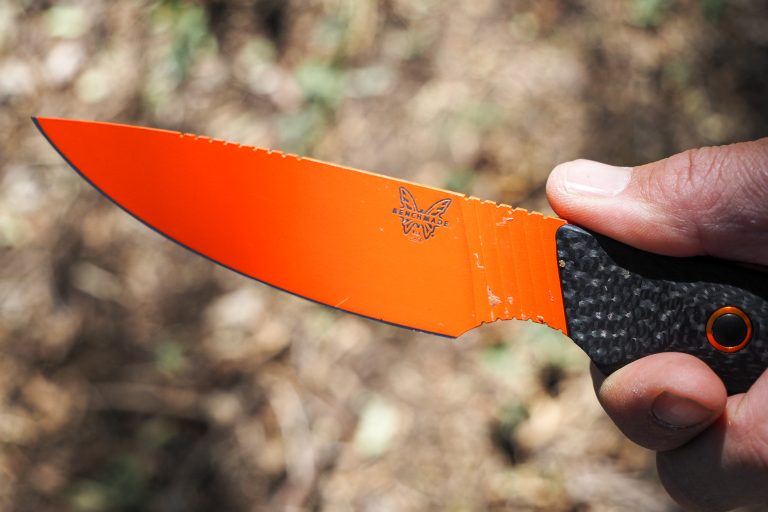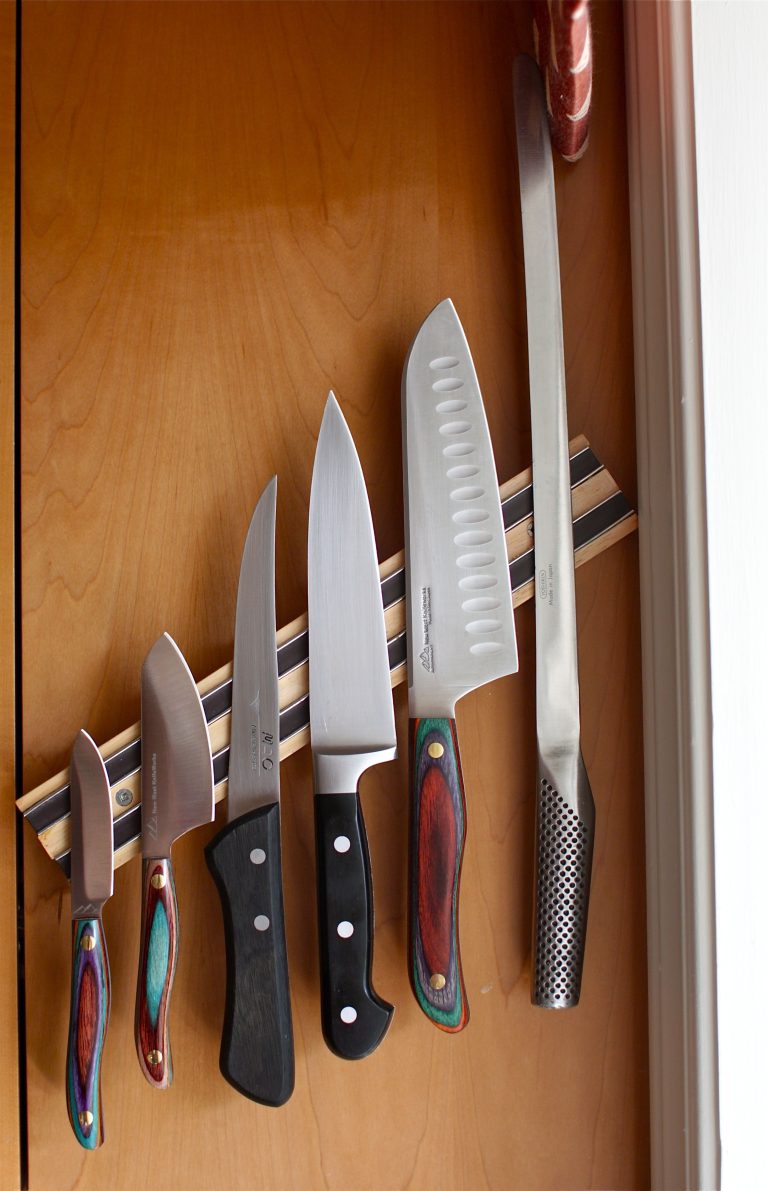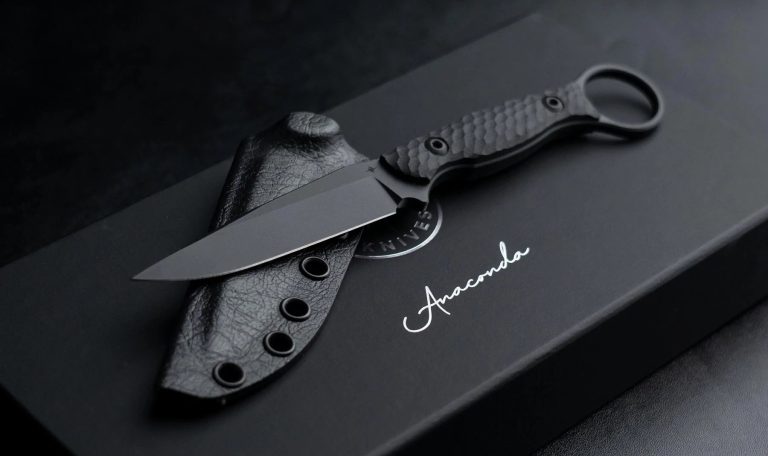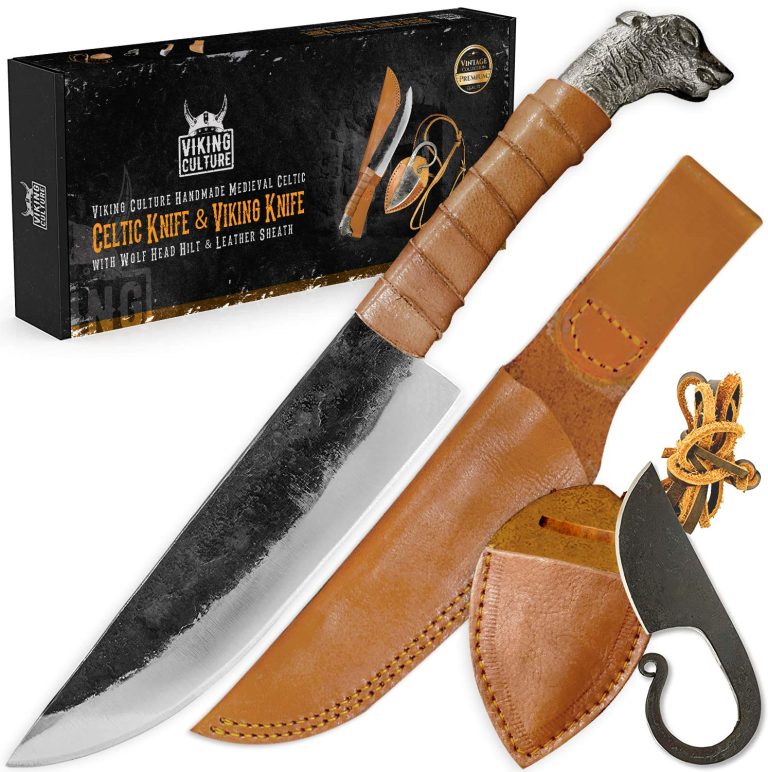Customizing Home Knife Handles for Personal Style
Customizing home knife handles for personal style allows individuals to add a unique touch to their knives, reflecting their own taste and preferences. By choosing materials, colors, and designs that resonate with them, individuals can create a one-of-a-kind knife that truly feels like their own.
Whether it’s adding a personalized engraving, using exotic wood or incorporating a favorite color, the possibilities are endless for creating a customized knife handle that showcases personal style and adds a distinctive touch to the knife. With a few supplies and some creativity, anyone can transform a plain knife handle into a personalized work of art.
1. Why Customizing Knife Handles?
Customizing knife handles allows homeowners to personalize their kitchen essentials, adding a unique touch of style. By customizing home knife handles, individuals can showcase their personal taste and elevate the aesthetic of their cooking space.
Adding Personal Style To Your Kitchen Tools:
- Customizing the handles of your home knives is a fantastic way to express your personal style and add a unique touch to your kitchen tools. Whether you prefer sleek and minimalist aesthetics or vibrant and colorful designs, custom handles can bring your personality into the heart of your culinary space. Let’s explore why customizing knife handles is a popular choice among home chefs:
Enhancing Comfort And Grip:
- A well-customized knife handle not only enhances the visual appeal but also greatly improves the comfort and grip while using the knife. Here’s why customizing knife handles can enhance your cooking experience:
- Ergonomic design: Customized handles can be ergonomically shaped to fit perfectly in your hand, reducing strain and fatigue during long cooking sessions.
- Material choice: By selecting the right materials for your custom knife handle, such as rubber or silicone, you can ensure a comfortable and secure grip, promoting precise control over your cuts.
- Texture and finish: Personalized knife handles can be textured or finished in a way that suits your grip style. This allows for enhanced traction and better handling, reducing the risk of accidents in the kitchen.
Reflecting Your Culinary Personality:
- As every chef has their own cooking style and preferences, customizing knife handles provides a wonderful opportunity to reflect your culinary personality. Below are some reasons why personalizing your knife handles can showcase your unique culinary identity:
- Design and aesthetics: Personalized knife handles can feature unique designs, patterns, or engravings that align with your personal tastes. Whether you prefer an elegant, rustic, or modern look, customizing the handle ensures it complements your kitchen aesthetic.
- Branding and personal touch: Adding your initials, logo, or other personal symbols can give your knife handles a custom branding touch, creating a sense of ownership and pride in your kitchen tools.
- Gift and heirloom potential: Customized knife handles can be excellent gifts for fellow cooking enthusiasts as well as cherished heirlooms that pass down culinary traditions through generations.
Embrace the world of customizing knife handles to enhance both the style and functionality of your kitchen tools. With personalized designs, improved comfort and grip, and a reflection of your culinary personality, you’ll truly transform your cooking experience from ordinary to extraordinary.
Let your knives speak volumes about your unique approach to the art of cooking.
2. The Basics Of Knife Handles
One way to add a personal touch to your home knife collection is by customizing the handles. Choose materials, colors, and designs that reflect your unique style and elevate your culinary experience.
Materials: Wood, Bone, Plastic, And More
When it comes to customizing knife handles, choosing the right material is crucial in achieving both style and functionality. Here are some popular materials widely used for knife handles:
- Wood: Wood handles are not only aesthetically pleasing but also offer excellent grip and durability. Common wood varieties used for knife handles include walnut, rosewood, and birch.
- Bone: Bone handles bring a unique and natural look to the knife. They are known for their strength and ability to age beautifully over time. Buffalo, camel, and mammoth are some commonly used bones for knife handles.
- Plastic: Plastic handles are lightweight, affordable, and resistant to moisture. They are often used in budget-friendly knives or for applications requiring easy maintenance.
- Composite materials: Composite materials, such as G-10 and Micarta, offer the benefits of both wood and plastic. They are highly durable, lightweight, and provide excellent grip even in wet conditions.
- Exotic materials: For those seeking a truly personalized touch, knife handles can be made from exotic materials like carbon fiber, titanium, or even natural gemstones. These materials add a touch of luxury and uniqueness to the knife.
Ergonomics: Finding The Perfect Fit
Finding a knife handle that fits comfortably in your hand is essential for prolonged use and precision. Here’s what you need to consider when it comes to ergonomic knife handles:
- Shape: The shape of the handle should conform to the natural curves of your hand, providing a secure and comfortable grip. Handles with a slight curve or contours help reduce fatigue during extended use.
- Texture: The handle’s texture plays a significant role in grip and control. A handle with a textured surface, such as checkering or stippling, provides a non-slip grip, even in wet or oily conditions.
- Finger grooves: Some knife handles feature finger grooves that guide your fingers into a specific position, enhancing control and preventing slippage.
- Size: The handle should match the size of your hand. Too small, and you risk discomfort and lack of control. Too large, and you may have difficulty maneuvering the knife effectively. Consider your hand size and grip style to determine the right handle size for you.
Balance: Importance For Controlled Cutting
A well-balanced knife offers improved control and maneuverability, leading to more precise cutting. Here’s why balance matters when it comes to knife handles:
- Center of gravity: The center of gravity should be positioned near the bolster (where the blade meets the handle) for optimal balance. This balance ensures that the knife feels balanced and controlled in your hand during cutting tasks.
- Blade-to-handle ratio: The ratio between the blade and the handle’s weight affects the overall balance. A well-balanced knife will have a proportional blade-to-handle weight distribution.
- Control and precision: Balanced knives allow for controlled movements and precise cuts. This is particularly important for intricate tasks that require fine motor skills, such as slicing or mincing.
Remember, the choice of materials, ergonomic design, and balance of the knife handle all contribute to both the aesthetics and functionality of your customized knife. Take time to explore different options and find the perfect combination that suits your personal style and cutting needs.
3. Choosing The Right Knife Handle Material
Customizing home knife handles allows individuals to express their personal style. When it comes to choosing the right handle material, it’s important to consider factors like durability, comfort, and aesthetics for a custom knife that suits your needs perfectly.
Customizing Home Knife Handles For Personal Style
If you’re passionate about cooking and take pride in your kitchen tools, then customizing your home knife handles is an excellent way to add a personal touch. When it comes to choosing the right knife handle material, there are several options available that can enhance both the aesthetic appeal and functionality of your blades.
Let’s explore three popular choices: wood, synthetic materials, and resin.
Wood: Classic Charm And Warmth
Wooden knife handles have timeless charm and bring a warm, organic feel to your kitchen. Here are some key points to consider:
- Natural beauty: Wood handles offer an elegant and rustic appeal, enhancing the overall visual appeal of your knives.
- Variety of options: With various wood types, including oak, walnut, and olive wood, you can achieve distinct looks that match your personal style.
- Comfortable grip: Wood provides a comfortable and ergonomic grip, allowing you to maneuver the knife securely and effectively.
Synthetic Materials: Durability And Versatility
Synthetic materials have gained popularity due to their durability and versatility. Here’s what you need to know:
- Highly durable: Knife handles made from synthetic materials like G10, Micarta, or fiberglass-reinforced nylon are known for their exceptional strength and resistance to wear.
- Water and chemical resistant: Synthetic handles are less susceptible to water damage and the effects of various chemicals, making them ideal for long-term use.
- Wide range of colors: Synthetic materials can be molded in an array of vibrant colors, allowing you to customize your knife handles to match your kitchen decor or personal preferences.
Resin: Combining Style And Functionality
Resin handles offer a unique blend of style and functionality. Here are the advantages of choosing resin:
- Unlimited customization: Resin can be shaped and colored in countless ways, enabling you to create custom patterns or even incorporate objects like flowers or personal mementos.
- Durable and lightweight: Resin handles provide durability without adding much weight to the knife, ensuring a comfortable grip during long cooking sessions.
- Stain resistance: Resin is relatively resistant to staining, making cleaning and maintenance easier.
Now that you know the benefits of different knife handle materials, you can make an informed decision based on your personal style, comfort, and durability requirements. Whether you prefer the classic charm of wood, the durability of synthetic materials, or the unique customization of resin, customizing your home knife handles is an exciting opportunity to express your individuality in the kitchen.
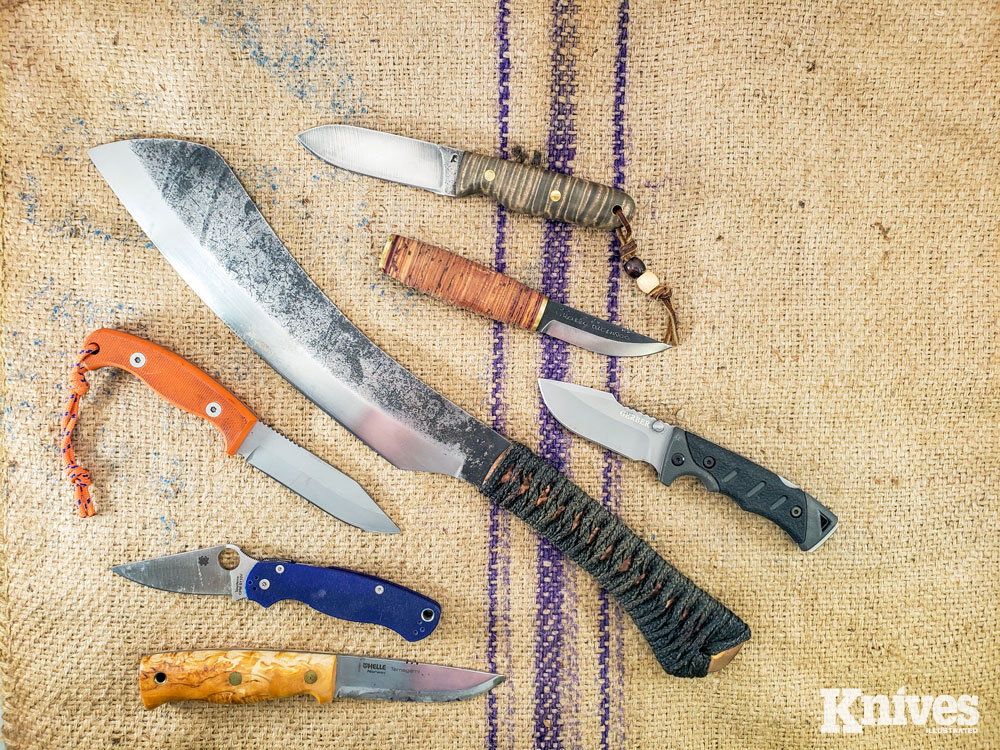
Credit: www.knivesillustrated.com
4. Popular Techniques For Customizing Knife Handles
Discover popular techniques for customizing home knife handles to match your personal style. From intricate carvings to unique materials, explore creative ways to make your knives stand out.
Carving And Sculpting: Creating Unique Designs
Carving and sculpting knife handles is a popular technique that allows you to create unique designs that reflect your personal style. Here are some key points to keep in mind:
- Intricate designs: Carving and sculpting techniques offer the opportunity to create intricate patterns and details on the surface of the handle.
- Custom shapes: With this technique, you can customize the shape of the handle to fit your hand perfectly, providing a comfortable grip while adding a touch of uniqueness to your knife.
- Materials: Carving and sculpting can be done on various handle materials like wood, bone, or even synthetic materials like G10 or Micarta.
- Tools: To achieve desired results, you’ll need tools such as carving knives, chisels, gouges, and rasps.
- Skill and practice: Mastering the art of carving and sculpting knife handles requires time, patience, and practice. Start with simple designs and gradually work your way up to more complex patterns as your skills improve.
Dyeing And Staining: Adding Color And Depth
Dyeing and staining are techniques used to add color and depth to knife handles. Here’s what you need to know:
- Enhancing natural beauty: Dyeing and staining can be used to enhance the natural beauty of the handle material, whether it’s wood, bone, or other materials.
- Customization options: These techniques offer a wide range of color options, allowing you to match the handle to your personal style or even create unique and eye-catching color combinations.
- Variation in intensity: Depending on the desired effect, you can apply the dye or stain with different levels of intensity, creating a subtle or vibrant appearance.
- Protective finish: It’s important to apply a protective finish after dyeing or staining to ensure durability and longevity. This can include sealants or specific woodworking finishes.
- Experimentation and creativity: Dyeing and staining provide an opportunity to experiment with different color techniques, gradients, and effects to achieve a truly personalized handle.
Inlay And Damascening: Adding Intricate Details
Inlay and damascening techniques allow you to add intricate details to knife handles, making them stand out. Consider the following:
- Decorative elements: Inlay and damascening involve incorporating various materials such as metal, wood, or even precious stones into the handle to create unique and eye-catching designs or patterns.
- Skill and precision: These techniques require high levels of skill and precision, as they involve precise cutting, shaping, and fitting of the inlay materials.
- Durability and longevity: Properly executed inlays and damascening can provide a long-lasting and durable handle, as the added materials can enhance the strength and stability.
- Increased value: Custom knife handles with inlay or damascening can significantly increase the value of the knife, making them highly sought after by collectors and enthusiasts.
- Artistic expression: Inlay and damascening techniques allow for artistic expression, offering a way to showcase your creativity and individual style through your knife handle.
Remember, whether you choose carving and sculpting, dyeing and staining, or inlay and damascening, these popular techniques provide endless possibilities to customize your knife handle, adding a personal touch that sets it apart from the rest. So, unleash your creativity and make your knife handle truly unique and reflective of your personal style.
5. Tools And Supplies For Customizing Knife Handles
Discover the essential tools and supplies needed for customizing knife handles at home. Add a personal touch to your kitchen tools with unique designs that reflect your style.
Customizing Home Knife Handles For Personal Style
When it comes to customizing knife handles, having the right tools and supplies is essential. Whether you’re looking to create a personalized knife handle or repair an existing one, having the proper equipment will make the process smoother and more enjoyable.
In this section, we’ll explore the various tools and supplies you’ll need for customizing knife handles.
Basic Woodworking Tools: Chisels, Files, And Sandpaper
- Chisels: A set of chisels will be invaluable when it comes to carving and shaping the handle. From removing material to creating intricate patterns, chisels allow you to bring your creative vision to life.
- Files: Files come in different shapes and sizes and are perfect for refining the shape of the handle. They are effective in removing rough edges, providing a smooth finish, and shaping the handle to your desired specifications.
- Sandpaper: Sanding is an essential step in the customization process. With different grits of sandpaper, you can achieve a polished and professional look. It helps in smoothing the surface, removing imperfections, and preparing the handle for finishing.
Stabilizing Resins: Ensuring Longevity
- Stabilizing resins are commonly used to enhance the durability and longevity of knife handles. They penetrate the wood or material, strengthening it from within and making it resistant to moisture, cracking, and warping. By stabilizing the handle, you ensure that your customized creation withstands the test of time.
Epoxy Adhesives: Bonding Different Materials
- Epoxy adhesives are versatile and strong, making them ideal for bonding different materials together. Whether you want to attach wooden scales to a metal blade or join multiple materials to create a unique handle, epoxy adhesives provide a reliable bond. They offer excellent adhesion and can withstand heavy use, ensuring that your customized handle stays intact.
With these essential tools and supplies at your disposal, you’re well on your way to creating a customized knife handle that reflects your personal style and taste. The combination of basic woodworking tools, stabilizing resins, and epoxy adhesives opens up a world of possibilities for customization.
So grab your chisels, files, sandpaper, and let your creativity shine.
6. Step-By-Step Guide To Customizing Your Knife Handle
Looking to add a personal touch to your home knife collection? Our step-by-step guide will show you how to customize your knife handle, allowing you to express your own unique style.
Customizing Home Knife Handles For Personal Style
Knives are not just tools; they can also be a reflection of personal style. If you’re someone who likes to put their own touch on everything they own, then customizing your knife handle is the perfect project for you. In this step-by-step guide, we will walk you through the process of customizing your knife handle, from preparing the knife to implementing your design.
Let’s dive in!
Preparing Your Knife: Detaching The Handle
To start customizing your knife handle, you’ll first need to detach the existing handle. This allows you to work directly on the handle material or replace it entirely. Follow these steps to prepare your knife:
- Gather the necessary tools such as a screwdriver or Allen wrench, depending on the type of fastening used for your knife handle.
- Carefully remove any screws or fasteners that hold the handle in place.
- Once the handle is detached, clean the knife blade and remove any debris or adhesive residue.
Designing Your Customization: Sketching And Planning
Now that your knife is ready, it’s time to design your customization. This step allows you to visualize your ideas and plan the execution of your design. Here’s what you need to do:
- Start by sketching your design concept on a piece of paper. Consider factors like aesthetics, ergonomics, and functionality.
- Take into account the shape and size of the knife handle, ensuring your design fits well and is comfortable to hold.
- Experiment with different patterns, textures, or motifs that align with your personal style. The possibilities are endless!
- Once you’re satisfied with your sketch, take note of the materials and techniques you plan to use for the implementation stage.
Implementing Your Design: Carving, Dyeing, Or Inlaying
With your design plan in hand, it’s time to bring it to life. Depending on your preferences and skillset, choose one or a combination of these techniques to implement your design:
- Carving: Use carving tools to sculpt the handle material, creating intricate designs or patterns. Take your time and pay attention to details to achieve the desired result.
- Dyeing: If you’re working with wooden handles, dyeing can be a great way to add a pop of color. Choose wood dyes that are specifically formulated for this purpose and apply them evenly to achieve the desired color intensity.
- Inlaying: For a more sophisticated look, consider inlaying materials like bone, metal, or acrylic into the handle. This technique requires precision and patience, but the end result is truly stunning.
Remember, customizing your knife handle is all about personal expression. Let your creativity guide you as you transform your knife into a unique piece that reflects your style. Happy customizing!
7. Tips And Tricks For Customization Success
Discover essential tips and tricks for customizing home knife handles to reflect your personal style. Elevate your culinary experience with unique and personalized knife handles that are both functional and visually appealing. Unleash your creativity and make your mark in the kitchen with these customization success secrets.
Taking Your Time: Patience For Precision
When customizing home knife handles, it’s important to take your time to ensure precise results. Rushing through the process can lead to mistakes and unsatisfactory outcomes. By practicing patience and giving attention to detail, you can create a customized knife handle that truly reflects your personal style.
Here are some tips and tricks to help you achieve customization success:
- Plan your design: Before diving into customization, take the time to plan out your design. Consider the overall aesthetics you want to achieve, such as the color scheme or embellishments.
- Marking guidelines: Use a pencil or masking tape to mark guidelines on the handle, ensuring accurate placement of any designs or patterns you plan to add.
- Start with small modifications: If you’re new to handle customization, it’s a good idea to start with small modifications. This allows you to gain confidence and develop your skills before tackling more intricate designs.
Practicing On Scrap Material: Developing Skills
Customizing knife handles requires a certain level of skill and precision. It’s essential to practice on scrap material before working on the actual handle to refine your techniques. Here’s why this step is crucial and some pointers to help you develop your skills effectively:
- Familiarize yourself with the tools: Practice using different tools and techniques on scrap material to become comfortable and proficient in their usage.
- Experiment with different designs: Scrap material provides an excellent opportunity to experiment with various designs and embellishments. Use this practice to refine your ideas and find what works best for you.
- Learn from your mistakes: Working on scrap material allows you to make mistakes without damaging the actual knife handle. Take note of any errors and use them as learning opportunities to improve your technique.
Sealing And Finishing: Protecting The Customized Handle
Once you have successfully customized your knife handle, it’s essential to protect your hard work by sealing and finishing the surface. This final step not only enhances the appearance of the handle but also adds durability. Consider the following tips for sealing and finishing your customized handle:
- Choose the right sealant: Select a sealant that is suitable for the material of the handle. Options can include oils, waxes, or clear coatings designed for knife handles.
- Apply multiple coats: To ensure optimal protection, apply multiple coats of sealant, allowing each coat to dry fully before adding another. This will create a strong barrier against moisture and everyday wear and tear.
- Consider finishing touches: Depending on your desired finish, you may want to buff or sand the handle after sealing. This can give it a smooth texture or enhance any wood grain patterns.
Remember, taking the time to seal and finish your customized handle will not only protect it but also ensure it remains a beautiful reflection of your personal style for years to come.
8. Showcasing Your Customized Knife Handles
Enhance your kitchen aesthetic with custom knife handles that showcase your personal style. Elevate your cooking experience with unique and customized designs that reflect your individuality.
Whether you’re a professional chef or an enthusiastic home cook, customizing knife handles offers a unique opportunity to showcase your personal style and creativity. From sharing your creations on social media to hosting dinner parties and gifting customized knives, there are various ways to highlight these beautiful and functional pieces.
Let’s explore three exciting ways to showcase your customized knife handles:
Sharing On Social Media: Inspiring Others
- Capture stunning photos of your customized knife handles and post them on social media platforms like Instagram, Facebook, or Pinterest.
- Use artistic angles, natural lighting, and appealing backgrounds to showcase the unique design and materials of each handle.
- Provide captions that describe the inspiration behind your customizations, the materials used, and the techniques employed.
- Utilize relevant hashtags related to cooking, knife customization, and your personal style to reach a wider audience.
- Engage with other knife enthusiasts and culinary aficionados by commenting on their posts, exchanging ideas, and seeking inspiration.
Hosting Dinner Parties: Impressing Guests
- Impress your guests by displaying your custom knife handles on a stylish, designated knife block or magnetic strip in your kitchen.
- During meal preparation, share anecdotes about the inspiration behind each handle’s design or the significance of the materials used.
- Allow guests to handle and test your customized knives, showcasing their ergonomics and the high-quality craftsmanship that went into crafting them.
- Incorporate your knives into the presentation of dishes, adding a touch of personal flair to your culinary creations.
- Encourage conversations about knife customization and offer recommendations to guests who express interest in acquiring their own unique knives.
Gifting Customized Knives: Thoughtful And Unique Presents
- Surprise your loved ones with personalized, customized knives for special occasions like birthdays, weddings, or housewarmings.
- Consider the recipients’ individual style, preferences, or hobbies when designing the handles to make the gift even more personal.
- Attach a heartfelt note explaining the design choices and the care that went into creating a one-of-a-kind piece.
- Emphasize the longevity and functionality of the knives, highlighting how they will enhance the recipients’ cooking experiences.
- Recommend the proper care and maintenance of the knives, ensuring their longevity and continued enjoyment.
By showcasing your customized knife handles through social media, dinner parties, and thoughtful gifting, you can inspire others, impress your guests, and provide unique presents to loved ones. Let your creativity shine and enjoy the fruits of your labor, both in the kitchen and beyond.
9. Maintaining And Caring For Customized Knife Handles
Maintaining and caring for customized knife handles is essential to preserve their style and functionality. With proper cleaning, polishing, and protection, you can ensure that your home knife handles reflect your personal taste while staying in good condition.
Cleaning And Sanitizing: Preserving Your Design
Keeping your custom knife handles clean and germ-free not only ensures their longevity but also helps showcase your unique designs. Here are some tips to help you maintain and care for your customized knife handles:
- Regular cleaning: To remove dirt, grime, and any potential contaminants, gently wash your knife handles with mild soap and warm water. Avoid using abrasive cleaners or scrub brushes that may damage the handle’s design.
- Sanitizing: To ensure the highest level of hygiene, utilize a food-safe sanitizer after cleaning your knife handles. This step is especially important if you use your knives for food preparation.
- Drying: After cleaning and sanitizing, thoroughly dry the knife handles to prevent moisture buildup. Use a clean towel to wipe them down, paying attention to any crevices or intricate details.
- Storing: When not in use, store your customized knife handles in a dry and cool place to maintain their integrity. Avoid exposing them to excessive heat, direct sunlight, or extreme temperature fluctuations that could potentially cause warping or fading.
Refinishing And Restoring: Revitalizing Worn Handles
Over time, even the most well-crafted knife handles may start to show signs of wear and tear. Fortunately, you can restore their original beauty and extend their lifespan. Consider the following tips for refinishing and restoring your customized knife handles:
- Assessing the condition: Take a close look at your knife handles to identify any areas that require refinishing or restoration. This may include scratches, dents, or faded designs.
- Sanding: For minor imperfections, start by sanding the affected areas using fine-grit sandpaper. Work in gentle circular motions, gradually smoothing out the surface until it feels even.
- Reapplying finishes: If your handles have a protective finish, such as varnish or oil, consider reapplying it to enhance their look and provide additional protection. Follow the manufacturer’s instructions for best results.
- Customization touch-ups: If your handle design has faded or worn off, consider refinishing it with paint, resin, or other suitable materials. Ensure the products you use are safe for food contact if you use your knives in the kitchen.
Protecting From Moisture And Extreme Temperatures
To maintain the resilience and longevity of your customized knife handles, it’s crucial to protect them from moisture and extreme temperatures. Here are some precautionary measures to consider:
- Avoid soaking: Prolonged exposure to water can cause damage to wooden handles, so avoid soaking them in water or leaving them submerged.
- Drying thoroughly: After washing or cleaning your knife handles, ensure they are completely dry before storing them. Moisture can lead to mold, rot, or warping.
- Use a protective sheath or case: When transporting or storing your knives, consider using a sheath or case to shield the handles from external factors and prevent accidental damage.
- Keep away from extreme temperatures: Exposing your knife handles to extreme heat or cold can cause warping, cracking, or splitting. Avoid leaving them near stovetops, ovens, or in direct sunlight for extended periods.
By following these cleaning, refinishing, and protection tips, you can preserve the beauty and functionality of your custom knife handles for years to come. Remember, maintenance is essential in keeping your knife handles as unique as your personal style.
Frequently Asked Questions For Customizing Home Knife Handles For Personal Style
What Is The Best Shape For A Knife Handle?
The best shape for a knife handle depends on personal preference and comfort during use.
What Is The Best Handle Shape?
The best handle shape depends on personal preference and comfort. There is no one-size-fits-all answer.
What Is A Pom Knife Handle?
A pom knife handle is a short handle made from pom material, used for better grip.
What Is A Polymer Handle?
A polymer handle is a type of handle made from a synthetic material that is durable and lightweight.
Conclusion
Customizing home knife handles is a great way to add a personal touch and style to your kitchen tools. By selecting materials and designs that reflect your personality, you can create a unique set of knives that not only look beautiful but also enhance your cooking experience.
Whether you prefer a rustic wooden handle or a modern and sleek design, the options are limitless. Additionally, customizing knife handles allows you to tailor the grip and feel of the knife to your liking, ensuring maximum comfort and control while cutting.
Remember, when customizing, it’s important to consider the durability and maintenance of the materials used. Taking care of your custom knife handles will result in a long-lasting and stylish addition to your culinary arsenal. So, why not unleash your creativity and personalize your knives to showcase your personal style in the heart of your home?

